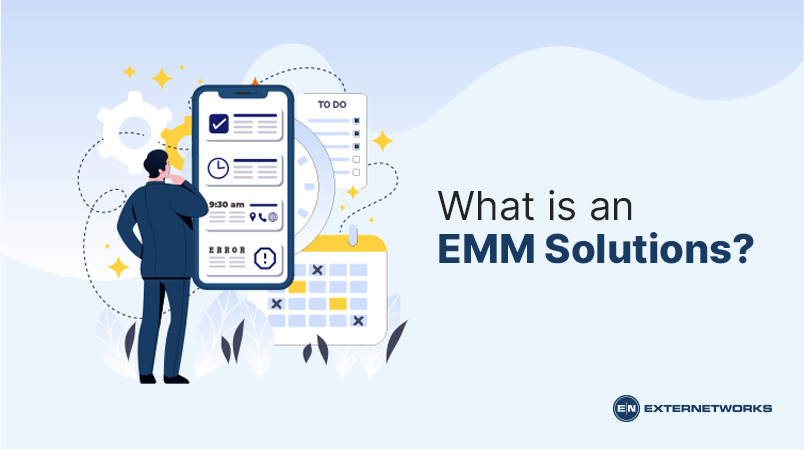28.4k views
Mobile device usage has increased dramatically over the last few years. Organizations have seen a rise in security breaches caused by lost or stolen phones and tablets. Many companies are now requiring all employees to carry company-issued smartphones and tablets. This means they must be able to connect to corporate networks and securely share information.
Enterprise Mobility Management (EMM) solutions are designed to manage mobile devices and applications within an organization. They provide secure access to corporate data and enable employees to work from anywhere.
The most common types of EMM solutions include Mobile Device Management (MDM), Application Security, Managed Services, Data Loss Prevention (DLP), and Identity & Access Management (IAM).
An EMM solution will typically integrate with existing enterprise systems like email, calendaring, CRM, ERP, etc. It will then monitor all system activity and alert the IT if any suspicious behavior occurs. This includes monitoring which apps are being used, where they are accessed, and what information is shared.
Enterprise mobility management works by providing a central repository for all user-related data. All activities performed on the endpoint are logged and stored in this database, including emails sent and received to calendar appointments. Once the logs are analyzed, they may be taken to prevent future incidents.
p>EMM solutions allow companies to control the use of personal mobile devices by enforcing policies and monitoring usage. This helps prevent theft of company information and ensures compliance with regulations such as HIPAA and PCI DSS.

There are four main reasons why your company may need an EMM Solution:
MDM solutions allow IT administrators to configure and monitor smartphones, tablets, and laptops remotely. This will enable them to enforce security policies, block malware, and prevent installing unauthorized apps.
An EMM solution provides centralized management of all devices, while MDM only manages individual smartphones and tablets. For example, an EMM solution can allow you to wipe a phone when it’s lost or stolen remotely. However, an MDM will not allow this functionality.
There are many different solutions available, so it’s important to understand what features you require before selecting one. The most common features include device management, remote wipe, application control, app distribution, data encryption, and cloud storage.
The most apparent benefit of EMM solutions is that they allow users to connect to company networks and apps using any device securely. This means that users can access all their files and information from wherever they are. It also allows them to collaborate with colleagues and share documents and presentations without worrying about losing sensitive data.
The most important features to consider are:
The most common use case for EMM solutions is to allow users to connect to corporate networks using their mobile devices securely. This will enable them to access company resources without logging into a separate computer system. Another widespread use case restricts access to sensitive information by allowing only authorized users to access certain apps and websites.
EMM solutions are used by businesses of all sizes across various industries, including retail, healthcare, financial services, manufacturing, transportation, government, education, etc. The most common reasons for using EMM include compliance requirements, security concerns, and cost savings.
Enterprise Mobility Management (EMM) is a type of Software as a Service (SaaS) that provides an integrated platform for managing endpoints, including mobile devices, desktops, laptops, tablets, and other networked devices. EMM solutions help organizations protect their assets while ensuring compliance with various regulatory standards. They also offer many other benefits, including increased productivity, improved collaboration, and reduced IT costs.
